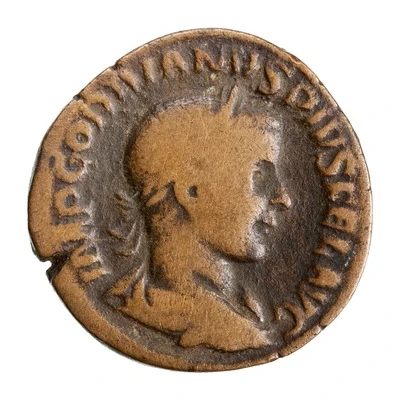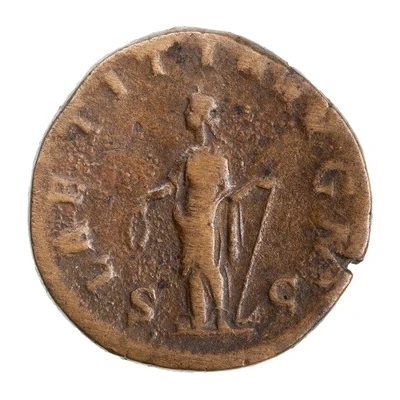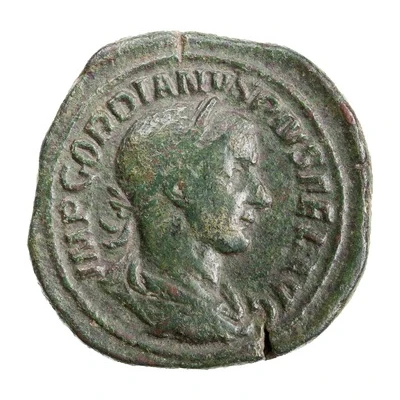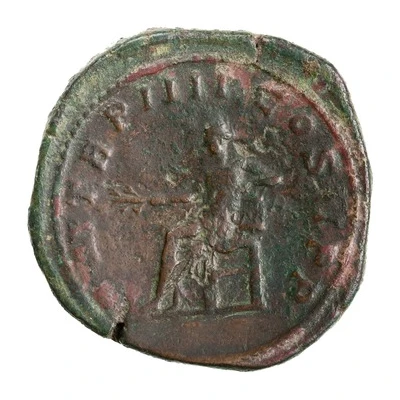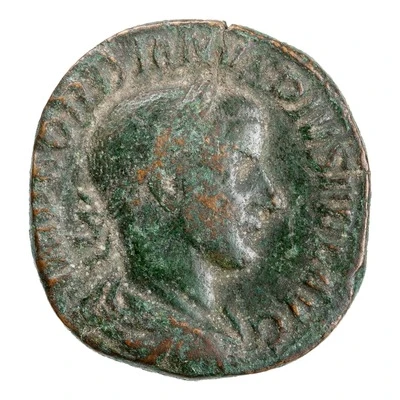
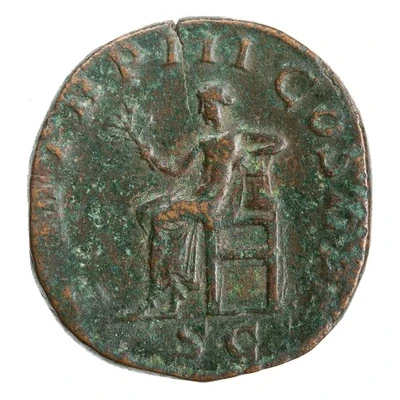

© American Numismatic Society (ANS)
Sestertius - Gordian III P M TR P III COS II P P S C; Apollo
| Bronze | 18 g | 29 mm |
| Issuer | Rome › Roman Empire (27 BC - 395 AD) |
|---|---|
| Emperor | Gordian III (Marcus Antonius Gordianus) (238-244) |
| Type | Standard circulation coin |
| Years | 241-244 |
| Value | Sestertius (⅛) |
| Currency | Antoninianus, Reform of Caracalla (AD 215 – 301) |
| Composition | Bronze |
| Weight | 18 g |
| Diameter | 29 mm |
| Shape | Round (irregular) |
| Technique | Hammered |
| Demonetized | Yes |
| Updated | 2024-10-05 |
| Numista | N#281115 |
|---|---|
| Rarity index | 94% |
Reverse
Apollo, nude to waist, seated left, holding branch in extended right hand and resting left elbow on lyre.
Script: Latin
Lettering: P M TR P III COS II P P S C
Translation:
Pontifex Maximus, Tribunicia Potestate Tertia, Consul Secundum, Pater Patriae. Senatus Consultum.
High priest, holder of tribunician power for the third time, consul for the second time, father of the nation. Decree of the senate.
Comment
Mass varies: 14.03–21.67 g;Diameter varies: 26.5–30 mm;
Example of this type:
American Numismatic Society (ANS)
Source:
Online Coins of the Roman Empire (OCRE)
Interesting fact
One interesting fact about this coin is that it features an image of Apollo, the Greek god of the sun, music, poetry, and prophecy, on its reverse side. This suggests that the Roman Empire, which was known for its military conquests and political power, also placed value on art, culture, and spirituality. The inclusion of Apollo on the coin may have been a way to promote unity and shared values between the Roman Empire and the Greek cities it had conquered. Additionally, the image of Apollo may have been seen as a symbol of wisdom, beauty, and civilization, which were all values that the Roman Empire sought to promote and uphold.
